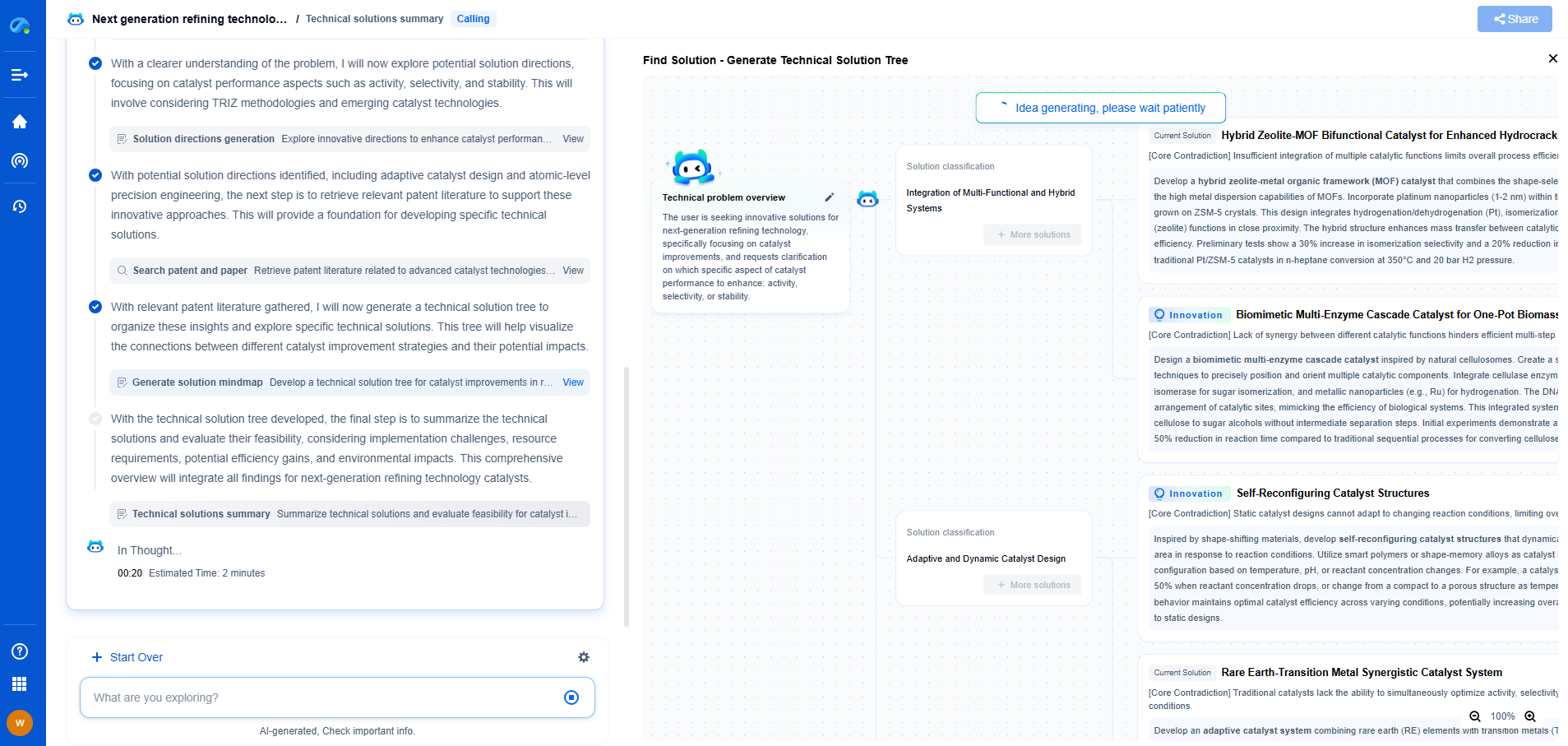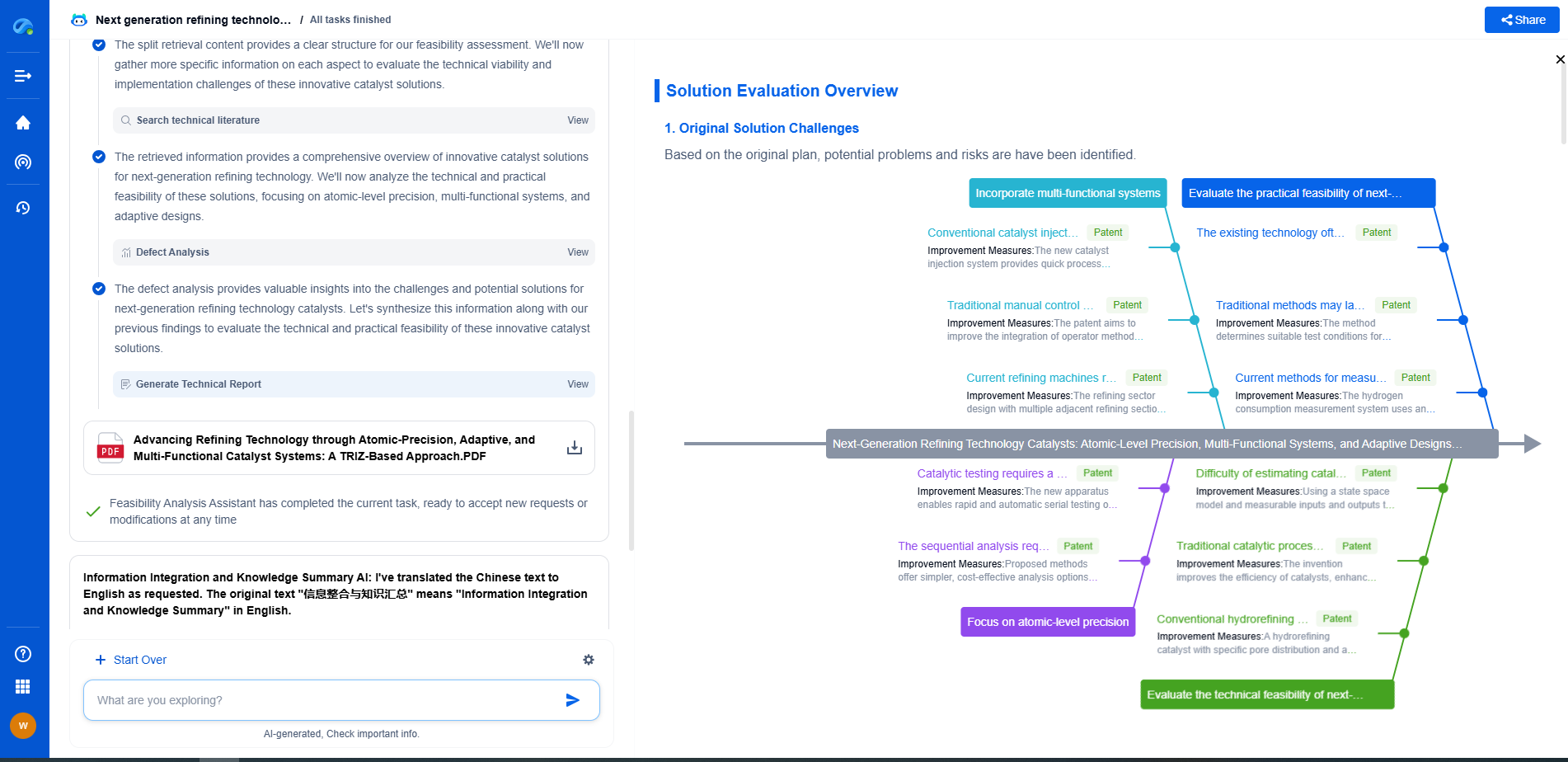How to Prevent Model Drift in Data-Driven Control Systems
JUL 2, 2025 |
Model drift, a phenomenon where the performance of a predictive model degrades over time as it encounters new data, poses a significant threat to data-driven control systems. This degradation can lead to suboptimal decision-making and inefficiencies. Therefore, preventing model drift is crucial for maintaining the reliability and effectiveness of these systems. In this article, we will explore various strategies to prevent model drift and ensure that data-driven control systems continue to operate at peak performance.
Understanding the Causes of Model Drift
Before diving into prevention strategies, it's essential to understand the causes of model drift. Typically, model drift occurs due to changes in the underlying data distribution, known as concept drift, or due to the model's inability to generalize well beyond its training dataset. These changes can be driven by evolving external factors, such as market trends, regulatory changes, or shifts in consumer behavior. Recognizing these potential sources is the first step in developing comprehensive prevention strategies.
Regular Model Retraining
One of the most effective ways to prevent model drift is through regular model retraining. By periodically updating the model with new data, you can ensure that it remains aligned with the current data distribution. This retraining process should include the validation of the model's performance against a fresh set of data to assess its accuracy and reliability. Automating this process, where feasible, can help in keeping the model up-to-date without significant manual intervention.
Implementing Continuous Monitoring
Continuous monitoring of model performance is crucial in detecting and addressing model drift promptly. By setting up performance metrics and alert systems, you can quickly identify when a model's predictions start to deviate from expected outcomes. This real-time feedback loop allows for immediate corrective actions, such as retraining the model or adjusting its parameters, to mitigate the effects of drift.
Data Preprocessing and Feature Engineering
Data preprocessing and feature engineering play a vital role in preventing model drift. Ensuring high-quality input data through techniques such as normalization, handling missing values, and outlier detection can improve the model's robustness. Additionally, feature engineering can help in capturing the most relevant aspects of the data, reducing the risk of drift by focusing the model on stable, meaningful signals rather than noise.
Leveraging Ensemble Methods
Ensemble methods, which combine multiple models to make predictions, can help in reducing model drift. By leveraging the strengths of different models, ensemble methods can provide more stable and accurate predictions, even when individual models might suffer from drift. Techniques such as bagging, boosting, or stacking can enhance the overall resilience of the control system against changes in data.
Establishing a Feedback Loop
Incorporating a feedback loop that continuously integrates human expertise and insights can significantly enhance a model's adaptability. Experts in the domain can provide contextual understanding and identify when the model's predictions are diverging due to data shifts. This feedback can then be used to fine-tune the model or recalibrate its parameters, ensuring that it remains relevant in dynamic environments.
Conclusion
Preventing model drift in data-driven control systems is a multifaceted challenge that requires a proactive and strategic approach. By understanding the root causes of drift and implementing measures such as regular retraining, continuous monitoring, robust data preprocessing, and leveraging ensemble methods, organizations can maintain the efficacy and accuracy of their models. Establishing a feedback loop that integrates human insights further bolsters the adaptability of these systems. Ultimately, these strategies ensure that data-driven control systems continue to deliver reliable performance, even in the face of evolving data landscapes.
Ready to Reinvent How You Work on Control Systems?
Designing, analyzing, and optimizing control systems involves complex decision-making, from selecting the right sensor configurations to ensuring robust fault tolerance and interoperability. If you’re spending countless hours digging through documentation, standards, patents, or simulation results — it's time for a smarter way to work.
Patsnap Eureka is your intelligent AI Agent, purpose-built for R&D and IP professionals in high-tech industries. Whether you're developing next-gen motion controllers, debugging signal integrity issues, or navigating complex regulatory and patent landscapes in industrial automation, Eureka helps you cut through technical noise and surface the insights that matter—faster.
👉 Experience Patsnap Eureka today — Power up your Control Systems innovation with AI intelligence built for engineers and IP minds.
- R&D
- Intellectual Property
- Life Sciences
- Materials
- Tech Scout
- Unparalleled Data Quality
- Higher Quality Content
- 60% Fewer Hallucinations
Browse by: Latest US Patents, China's latest patents, Technical Efficacy Thesaurus, Application Domain, Technology Topic, Popular Technical Reports.
© 2025 PatSnap. All rights reserved.Legal|Privacy policy|Modern Slavery Act Transparency Statement|Sitemap|About US| Contact US: help@patsnap.com

